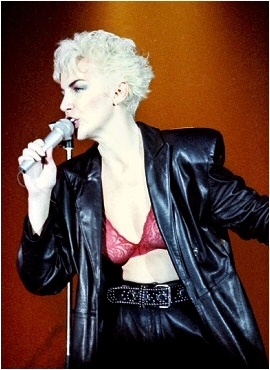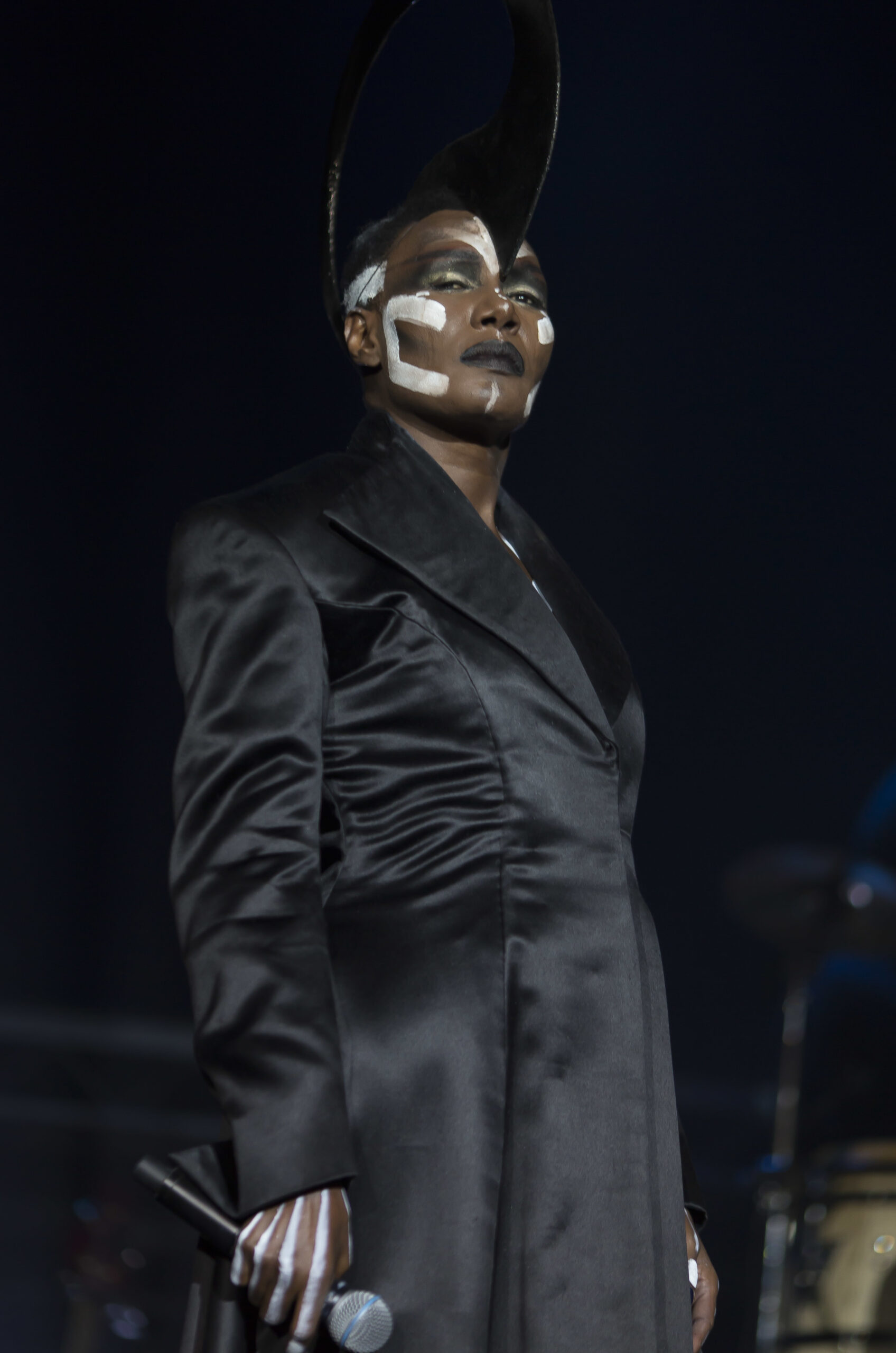
by Pamela Sneed
Recently when I visited Daisy Atterbury’s writing class at Queens College
I was talking about my book and asked a large group of students
about one or two generations ahead of mine, “Do you know who Annie Lennox is?”
They all shook their heads and said, “No.”
“You know, she is the pop singer/popular in the ‘80s.” “She like the white commercial Grace Jones.”
I scanned the room, no one knew who either of these women were and what I was talking about which exposed the generation gap.
As I said, both of these women are pop singers very popular during the ‘80s. Grace Jones was/is more of an underground sensation, she is a dark skin Black woman model of Jamaican heritage who kept her hair closely cropped and, sometimes during concerts, went fully naked covered by body paint and also sometimes wore men’s suits.
Annie Lennox became more of a pop phenomenon/ with her other band mate. They called themselves “The Eurythmics.” Eventually they broke up and Annie Lennox went solo.
During the ‘80s Annie Lennox also cross dressed/wore pinstriped men’s suits and kept her hair closely cropped. It was dyed fire engine red. I guess these women would be to some like this generation’s Beyoncé, Rihanna, Cardi B or even Katy Perry at times. They were self-styled Bad girls who pushed the envelope in music and touched upon important topics such as race, gender, politics, female empowerment and sexual orientation. For me as a young Black woman coming of age in Boston, leaving the suburbs and a Christian upbringing, to see an image of Annie Lennox on a Billboard dressed in a men’s suit/became an important touchstone for me. It affirmed my inclination to be an outsider and helped me on the path to embracing myself as a lesbian.

At any rate, my book that I recently published with Belladonna Press is titled Sweet Dreams, after the song that Annie Lennox made famous “Sweet Dreams Are Made of This.” My book is memoir–a hybrid form composed of poetry, prose, essay–and fuses history, pop culture, social commentary and more. It is about coming of age in Boston and making the decision to leave my family and follow dreams to become a writer in New York as a 21-year-old. I liken the experience to the stories of runaway slaves or as Dorothy Allison might say, to being an escapee, one of the ones who got away. The book charts all the upswings and pitfalls of becoming myself. It charts my journey as an undergrad at the New School and ultimately ends with me as a fully formed adult in Brooklyn. Like the Black women protagonists in the films The Color Purple and Pariah, about a young black lesbian coming of age in Fort Greene Brooklyn, I too am saved by poetry and literacy. Sweet Dreams started as a prompt two years ago when a Black lesbian writer contacted me and said they wanted to create a written series on Black lesbians, mental, physical and spiritual health. I thought this was a great idea because very little literature of this sort exists, and the topic is urgent and necessary. I chose to write about my own struggle with self-esteem. I wanted to make it as real and raw as possible as I have lived it. I have modeled my writing and performance after writers and truth tellers like Audre Lorde and Dorothy Allison. I was told that the students in Daisy Atterbury’s class have also studied Audre Lorde. From my observation and experience, we live in a culture that presumes to or pretends we have self-esteem. We are presented with false gods like money and clothing and things to fill ourselves up, but having real self-esteem is much more complicated, in particular if you don’t come from a family structure or are part of a particular race, class or orientation that is marginalized. There is a lot you must figure out on your own.
Besides topical issues and pop culture in my writing, I reference film a lot. During my class presentation, I also mentioned a book that I wrote, KONG after King Kong, and one of the students was astonished that I contended that KONG is black. “He’s not,” they said. “Yes, he is,” I said citing various sources. I think one of the flaws of particular movies these days is that they create voyeuristic experiences. In some films such as in Precious, the main character experiences horrific kinds of abuse and suffers many blows to her self-esteem, but the actions are so intense and over the top, it is hard to imagine it as ourselves. Yes, of course there are places we identity. It was hard for me to identity with the monstrousness and the seemingly sensationalistic types of abuse in Precious, until as a professor I met and worked with a student in real life who had experienced similar kinds of abuse. I showed her how to write and give voice to her struggle. It was hard for me also to identity totally with the character of Celie in The Color Purple until I realized in my own life I am just beginning to use my own voice and stand up for myself. I also think some of the recent slavery films would be more effective if they didn’t pretend that slavery was something that happened a long time ago with all of the grotesque whippings, but that racism has flourished in this country and survived much more subtly. If we really saw our responsibility, and ourselves, we would not be able to just eat popcorn and go home. We would make changes to our society and ourselves.
I did not have as much time to read from the book Sweet Dreams as I would have liked in the class I visited at Queens College. I read a lot of recent poetry and time ran out, but I had a chance to see Dee Rees’s film Pariah last night again. I was touched by the young Black lesbian woman who was able to overcome her obstacles through poetry and soar. Tellingly, the film opened with a quote from Audre Lorde. The film reflects my own story and my message as a writer as well.